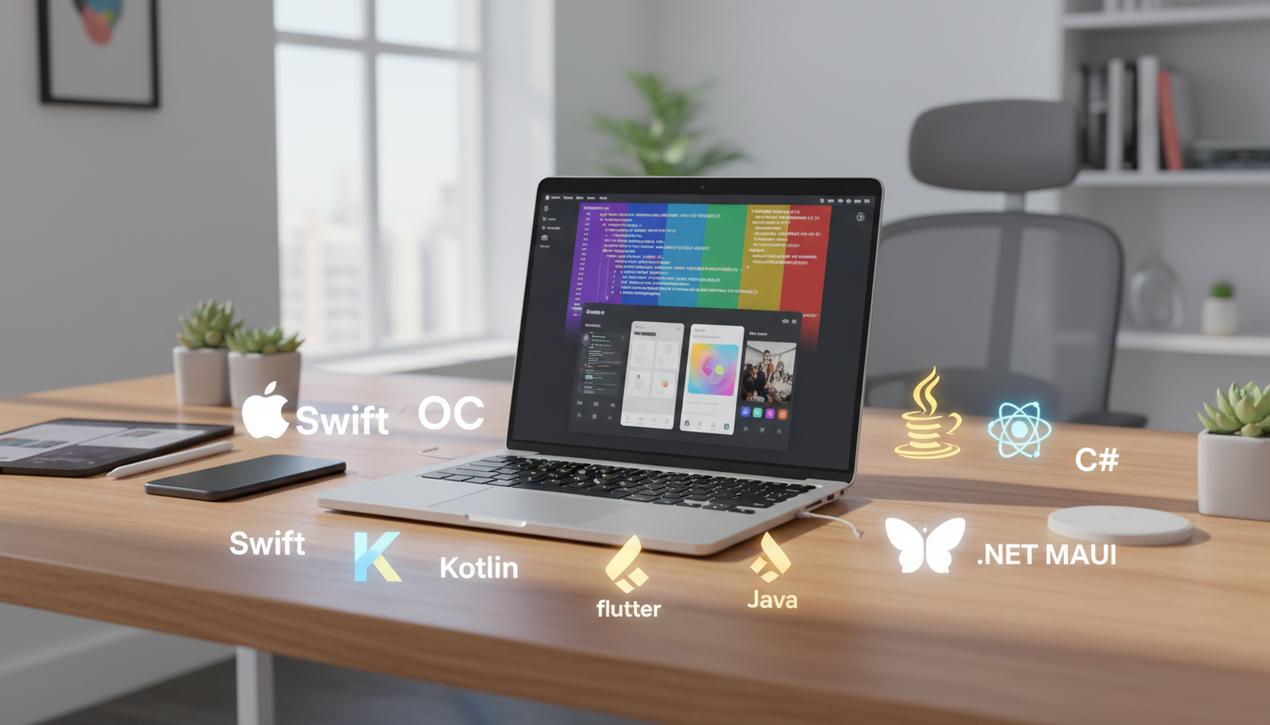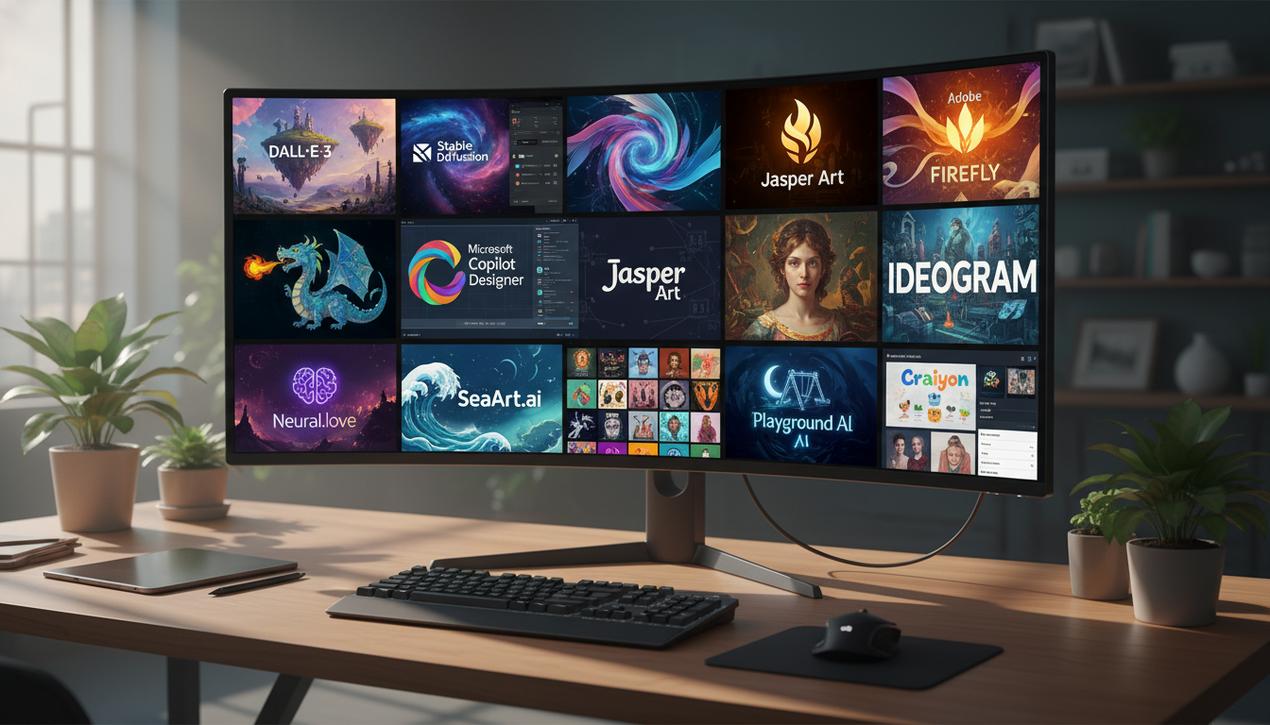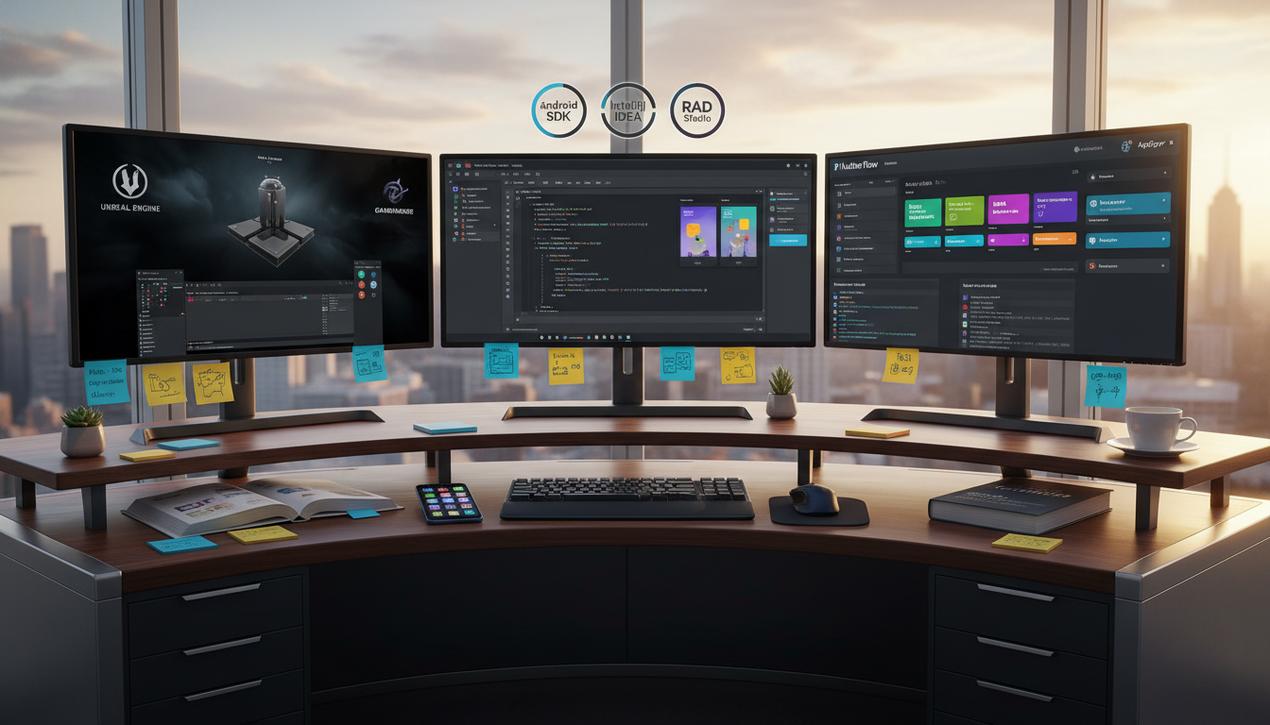A Developer’s Guide to Mobile App Languages in 2025


The mobile app market is projected to generate over $600 billion in revenue in 2025, a statistic that confirms a simple truth: ignoring mobile users is a major strategic failure. Embarking on creating an application is an exciting venture, but it begins with a fundamental technical choice: which programming language should you use? This decision will directly impact your application’s performance, budget, development time, and future maintenance. With dozens of options available, from high-performance native languages to agile cross-platform frameworks, it’s easy to feel overwhelmed. This comprehensive guide is designed to illuminate the 8 primary languages and frameworks dominating mobile app development in 2025, so you can make an informed choice that aligns with your project’s ambitions.
Understanding the 3 Approaches: Native, Hybrid, and Cross-Platform
Before diving into the languages themselves, it’s crucial to understand the three main development philosophies. Your choice of one of these approaches will largely determine the technologies you use.
- Native: Developing a native app means using the official programming language for the target platform (Swift/Objective-C for iOS, Kotlin/Java for Android). This approach delivers the best performance, full access to device features, and a perfectly integrated user experience. The major drawback is the cost: you must develop and maintain two separate codebases to reach both platforms.
- Cross-Platform: This modern approach has become extremely popular. It involves writing a single codebase that is then compiled to run natively on both iOS and Android. Frameworks like Flutter or React Native allow for performance very close to native while significantly reducing costs and development time.
- Hybrid: The hybrid approach involves building a web application (HTML, CSS, JavaScript) and wrapping it in a native “shell” that allows it to be distributed in app stores. Tools like Cordova are used for this. Although quick to set up, this method often suffers from lower performance and limited access to advanced native features.
The Go-To Languages for Native Development
For projects demanding maximum performance, flawless fluidity, or the use of cutting-edge hardware features (like Apple’s ARKit), native development remains the gold standard.
For iOS: The Apple Ecosystem
Swift: Launched by Apple in 2014, Swift quickly became the standard language for iOS, iPadOS, macOS, and watchOS development. Designed to be modern, safe, and fast, it features a clean and concise syntax that simplifies development and reduces the risk of errors. With frameworks like SwiftUI, it enables the creation of powerful, declarative user interfaces. Apps like LinkedIn, Airbnb, and Kickstarter use it extensively.
Objective-C: Before Swift, Objective-C was Apple’s historical language. While it has now been largely replaced by Swift for new projects, it remains relevant for maintaining and updating older applications. A working knowledge of Objective-C may be necessary if you are working on existing projects or older libraries.
For Android: The Power of Google
Kotlin: Since 2019, Kotlin has been the officially recommended language by Google for Android development. It is fully interoperable with Java but offers a more modern syntax, better safety (especially against null pointer errors), and more concise code. Its adoption has been meteoric, with over 80% of professional apps on the Play Store now using it, often integrated into the top Android app creation software. Giants like Trello, Netflix, and Pinterest have migrated to Kotlin for its productivity and robustness.
Java: For years, Java was the backbone of Android development. With over 25 years of history, it benefits from a huge community, comprehensive documentation, and rock-solid stability. Although Kotlin is now preferred, Java remains a solid skill and is still used for a vast number of applications, including the Android operating system itself.
The Rise of Cross-Platform Solutions
For the majority of businesses, the ability to launch an app on both iOS and Android simultaneously with a controlled budget is a major competitive advantage. This is where cross-platform frameworks excel.
Flutter (with the Dart language)
Created by Google, Flutter is a UI framework that has revolutionized cross-platform development. It uses its own rendering engine, Skia, to draw every pixel on the screen, allowing it to deliver beautiful and perfectly consistent user interfaces across both platforms. Written in the Dart language (also developed by Google), Flutter is renowned for its development speed, thanks in large part to its “Hot Reload” feature, which allows developers to see code changes in real-time. Applications from Google Pay and BMW are developed with Flutter.
React Native (with JavaScript/TypeScript)
Launched by Facebook, React Native allows developers to build mobile apps using JavaScript and React, technologies already mastered by millions of web developers. Its principle is “learn once, write anywhere,” enabling a large portion of the code to be shared between iOS and Android. It uses native UI components, ensuring an authentic user experience. The community is gigantic, and the ecosystem of libraries is very rich. Instagram, Uber Eats, and Discord are famous examples of apps built with React Native.
C# with .NET MAUI (formerly Xamarin)
For businesses already invested in the Microsoft ecosystem, .NET MAUI is a powerful cross-platform solution. It allows for the development of apps for iOS, Android, Windows, and macOS with a single codebase in C#. It is particularly popular in the enterprise world for its deep integration with Microsoft tools and its robustness, making it a top choice for complex business applications.
Criteria for Choosing the Right Language for Your Project
The “best” language does not exist in a vacuum. The right choice depends entirely on the specifics of your project. Here are the questions you need to ask:
- Performance and Complexity: Does your app require complex animations, intensive calculations, or low-level hardware access? If so, native (Swift/Kotlin) is often preferable.
- Budget and Time-to-Market: Do you need to launch quickly on both platforms with limited resources? A cross-platform (Flutter/React Native) solution is the most efficient path.
- Team Skills: Does your team already master JavaScript/React? React Native will be a natural choice. Do they come from a .NET background? .NET MAUI is a perfect fit.
- User Experience (UX): Do you want an app that strictly adheres to the design conventions of each platform? Native or React Native are excellent for this. Do you prefer a strong, consistent brand identity everywhere? Flutter is unbeatable.
- Long-Term Maintenance: Managing a single codebase with a cross-platform solution greatly simplifies updates and bug fixes compared to managing two separate native applications.
Choosing a programming language for your mobile application is one of the most impactful decisions you will make. In 2025, the ecosystem offers unprecedented flexibility. Native development with Swift and Kotlin remains the benchmark for raw performance, while cross-platform frameworks like Flutter and React Native dominate for their efficiency and agility. Carefully analyze your project’s needs, your team’s skills, and your long-term goals. By aligning your technology with your strategy, you will give yourself the best chance of building a successful mobile application capable of captivating its users.




